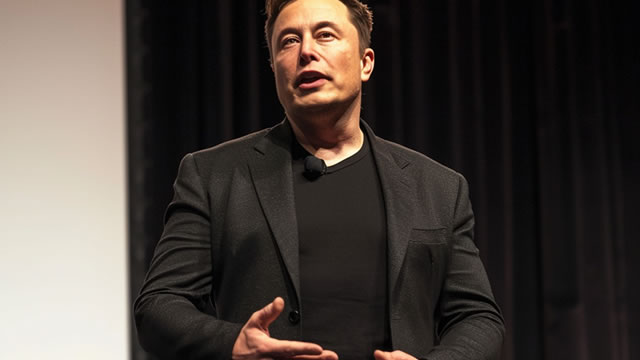Tesla, Inc.: Driving Forward with Catalysts and Innovation
Tesla, Inc. (TSLA), the pioneering electric vehicle (EV) and clean energy company, continues to captivate investors with its groundbreaking advancements in various sectors. Two significant catalysts are on the horizon: the testing of unsupervised Full Self-Driving (FSD) in Texas and the progress towards volume production of Optimus humanoid robots.
Unsupervised Full Self-Driving in Texas
Tesla’s FSD program, which aims to develop a vehicle capable of driving itself with no human intervention, is a major focus for the company. Texas has become the latest testing ground for this technology, following California and other states. The unsupervised aspect of testing in Texas means that Tesla vehicles will be driving without a safety driver, marking a significant step towards commercial deployment. Successful implementation of the FSD program could open the door for high-margin licensing opportunities with third-party automotive OEMs, potentially driving up Tesla’s revenue.
Volume Production of Optimus Humanoid Robots
Another catalyst for Tesla is the progress towards volume production of Optimus, the humanoid robot designed to perform tasks in manufacturing, construction, and other industries. Tesla’s CEO, Elon Musk, unveiled the robot prototype in August 2021, and the company has since shared updates on its development. The successful production and deployment of Optimus could lead to significant revenue growth for Tesla, as well as boosting the company’s reputation as a leader in technological innovation.
Energy Generation & Storage: A High-Growth Segment
Tesla’s Energy Generation & Storage segment, which includes solar panels, batteries, and energy services, remains a high-growth area for the company. Management has guided a 50% increase in deployments for solar and a strong revenue growth from the Shanghai factory ramp-up. This growth is driven by the increasing demand for clean energy solutions, as well as Tesla’s competitive advantages in battery technology and solar panel manufacturing.
Impact on Individuals
For individuals, the advancements at Tesla could lead to numerous benefits. The successful implementation of unsupervised FSD could make EVs an even more attractive option for consumers, as they would no longer need to worry about driving or parking. The deployment of Optimus robots could lead to increased efficiency and productivity in various industries, potentially reducing costs and improving services. Furthermore, Tesla’s energy solutions could make it easier for individuals to transition to clean energy, reducing their carbon footprint and saving them money on energy bills.
Impact on the World
On a larger scale, Tesla’s innovations could have a profound impact on the world. The successful implementation of unsupervised FSD could revolutionize transportation, making EVs the go-to choice for consumers and significantly reducing carbon emissions. The deployment of Optimus robots could lead to increased automation and efficiency in industries, potentially creating new jobs and driving economic growth. Tesla’s energy solutions could help transition the world towards renewable energy, reducing reliance on fossil fuels and mitigating the effects of climate change.
Conclusion
Tesla, Inc. continues to push the boundaries of innovation, with significant catalysts on the horizon in the form of unsupervised FSD testing in Texas and the progress towards volume production of Optimus humanoid robots. These advancements, coupled with the growth in Tesla’s Energy Generation & Storage segment, position the company for continued success and could have a profound impact on individuals and the world as a whole. As Tesla continues to lead the charge in technological innovation, investors and observers alike will be watching closely to see what the future holds.
- Tesla’s unsupervised FSD testing in Texas is a significant step towards commercial deployment, potentially opening the door for high-margin licensing opportunities with third-party automotive OEMs.
- The progress towards volume production of Optimus humanoid robots could lead to significant revenue growth and boost Tesla’s reputation as a leader in technological innovation.
- Tesla’s Energy Generation & Storage segment, which includes solar panels, batteries, and energy services, remains a high-growth area for the company, driven by the increasing demand for clean energy solutions.
- The successful implementation of unsupervised FSD could make EVs an even more attractive option for consumers, potentially revolutionizing transportation and reducing carbon emissions.
- The deployment of Optimus robots could lead to increased automation and efficiency in industries, potentially creating new jobs and driving economic growth.
- Tesla’s energy solutions could help transition the world towards renewable energy, reducing reliance on fossil fuels and mitigating the effects of climate change.





